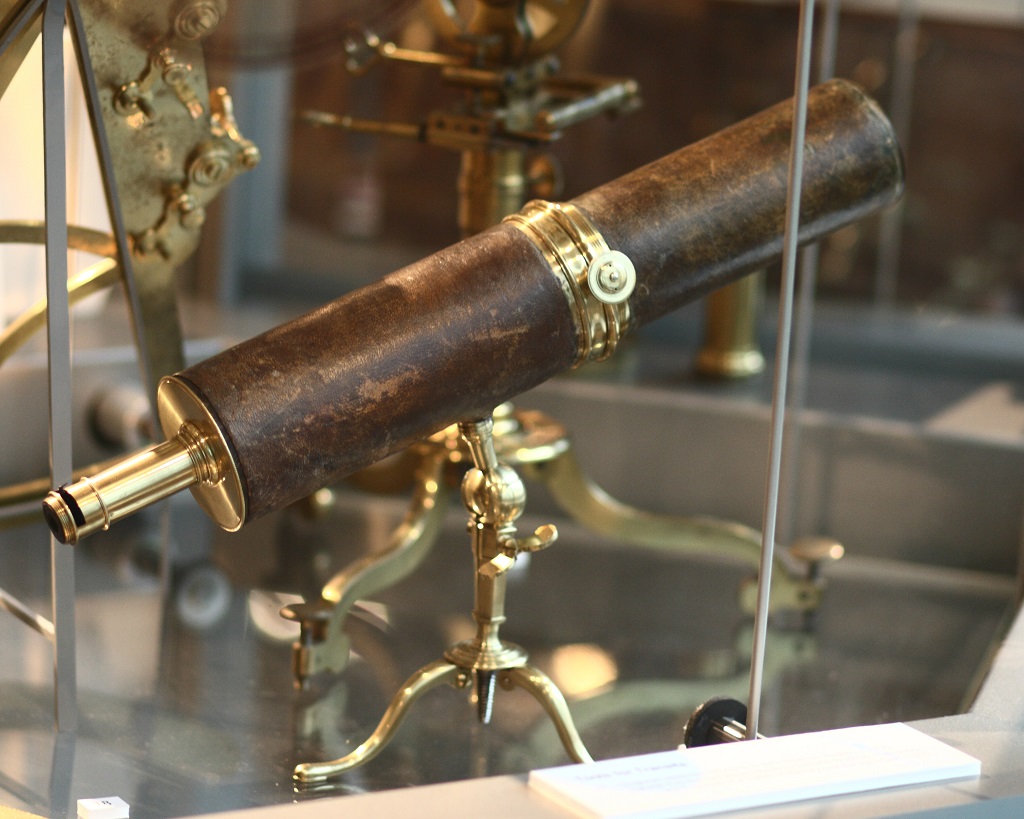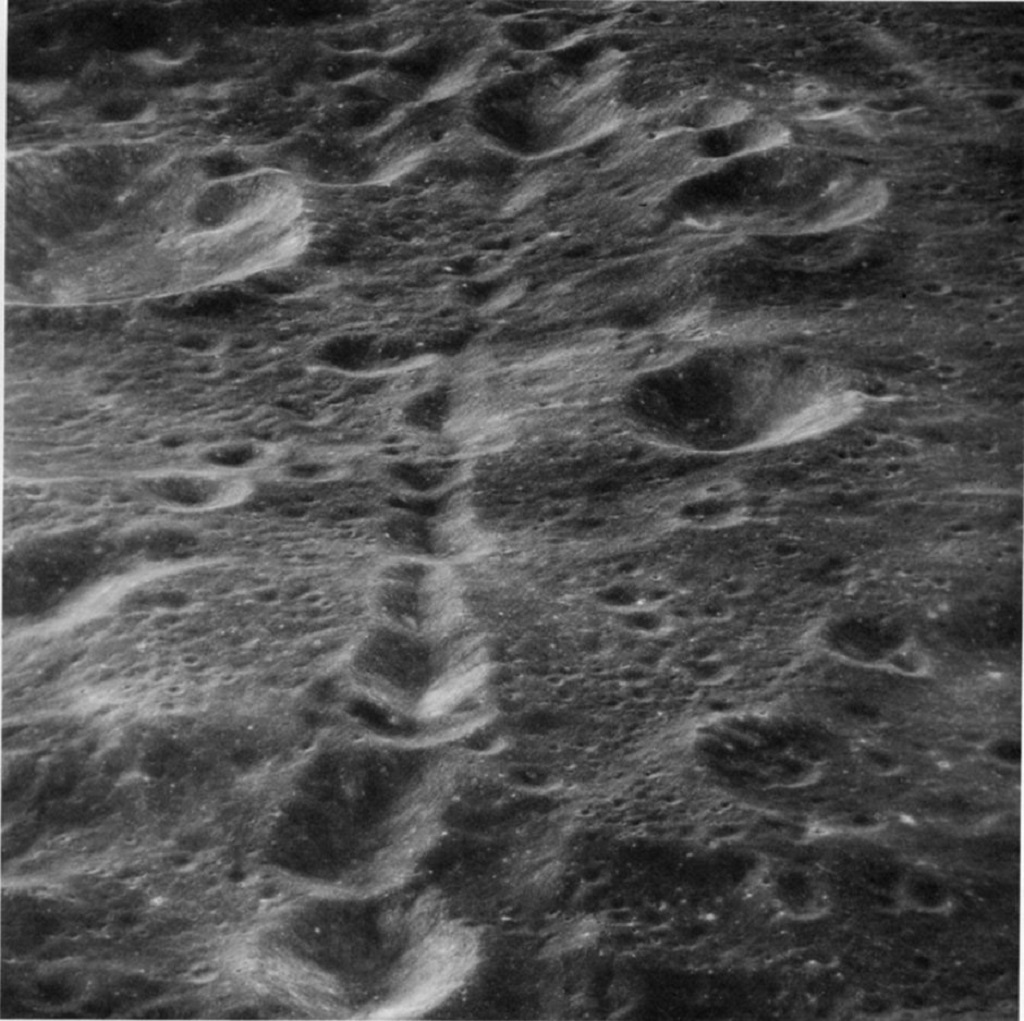James Gregory was the Scot who invented the reflecting telescope, discovered infinite series and made huge mathematical advances – all before the age of 30.
Born in November 1638, his entry in the Chambers Dictionary of Biography includes a long list of achievements, theories and discoveries in mathematics, astronomy and physics.
However, he is best known for his construction of the famous Gregorian telescope, to which he gave his name, and as the man who first distinguished between convergent and divergent series – convergent refers to one rational result whereas divergent reaches a variety of possible solutions.
Gregory was a professor of mathematics at Edinburgh (1674) and St Andrews (1688) universities, a Fellow of the Royal Society and the first person to develop the reflecting telescope, or ‘reflector’, in 1663.
This is an optical telescope, which uses either a single or combination of curved mirrors that reflect light and form an image. A reflector differs from a refracting telescope, which uses lenses, rather than mirrors.
Gregory advanced our knowledge in the area of trigonometry (a branch of mathematics which studies the lengths and angles of triangles) when he discovered the ‘infinite series’ for several trigonometric, or circular, functions in which, as the name suggests, the series continues indefinitely rather than having defined first and last terms.
The youngest of three children, Gregory was born on 6 November 1638 in the minister’s house – his father John Gregory was a Church of Scotland minister – in Drumoak, about 15km west of Aberdeen.
As a young boy he suffered from quartan fever, a malarial fever which recurrs at approximately 72 hour intervals, which afflicted him for around 18 months so he was taught at home by his mother Janet in those early years. Janet had a great enthusiasm for geometry which she passed onto her young son. Janet’s brother was also a pupil of François Viète, a French amateur mathematician and astronomer who introduced the first systematic algebraic notation in his book In artem analyticam isagoge.
After the death of Gregory’s father when he was 13 years of age, the responsibility for his education passed to his elder brother, David. Ten years his senior, David, who would go on himself to become a physician and inventor, nurtured his brother’s mathematical talent with the study of Euclid’s Elements. Gregory then went to Aberdeen Grammar School and Marischal College where he graduated in 1657.

A Gregorian telescope built circa 1735
We know that Gregory, by now a man in his mid-20s, travelled to London in 1663 and on to Padua in Italy the following year. Here he lived with fellow Scot, James Caddenhead, a professor of philosophy.
Sometime between his university days and his days on the road, Gregory had begun looking seriously at optics and the construction of telescopes.
The same year, aged only 24, Gregory published Optica Promota, a paper describing his design for a reflecting telescope and theories on the way the transit of Venus can be used to measure the distance of the Earth from the sun.
In the preface Gregory says: ‘Moved by a certain youthful ardour and emboldened by the invention of the elliptic inequality, I have girded myself with these optical speculations, chief among which is the demonstration of the telescope.’
The phrase ‘elliptic inequality’ refers to Kepler’s discoveries in this area.
Gregory admitted that he was not a practical man and therefore could not construct the telescope himself, neither did he know an optician who could make one on his behalf. Therefore he enlisted the help of John Collins, an accountant and publisher who corresponded extensively with the foremost scientists and mathematicians of the day.
However, their attempts to build Gregory’s telescope ended in failure. It would eventually be the Oxford physician Robert Hooke who built the first Gregorian telescope a decade later.
In 1667 Gregory published a paper entitled Vera Circuli et Hyperbolae Quadratura in which he was able to demonstrate how the areas of a circle and hyperbola – a symmetrical open curve which continues indefinitely – could be obtained via infinite convergent series, a series with no defined first and last terms.
It is extraordinary to think that a man of only 29 years of age could have achieved so much.
Gregory published Geometriae pars universalis right at the end of his Italian sojourn before he left Padua, in which he makes the first systematic attempt to document calculus. Gregory had now established himself amongst the intellectual elite. On his return to England in 1668, he was immediately elected a Fellow of the Royal Society (FRS). Later that year he travelled back to Scotland to take up a position as the first Regius Chair of Great Scots – James Gregory Mathematics at St Andrews University, a post that had been created for him by King Charles II to allow
Gregory to continue his outstanding mathematical research.
Following this, Gregory went on to work at the University of Edinburgh, where he held the Chair of Mathematics.
There was some controversy when Gregory returned to Britain from Padua over whether his discoveries were original. Some accused him of stealing ideas from the Dutch mathematician Christiaan Huygens. In this time of enlightenment in Europe, several mathematicians were working independently in the same areas. Gregory
was never guilty of plagiarism in spite of accusations.
However, this controversy made Gregory reluctant to publish his findings thereafter, which played a part in denying him the fame that he was undoubtedly due.
As well as his discovery of the refracting telescope, Gregory was also famed for his work on ‘diffraction grating’, the optical component with a periodic structure which splits and diffracts light into several beams travelling in different directions.

James is remembered by two neighbouring craters on the far side of the Moon
He discovered this using nothing more sophisticated than a delicate white bird feather, through which he observed the sunlight pass. Gregory was in correspondence with Isaac Newton, who was working in the same field at this time and had been experimenting with prisms a year earlier.
In the field of mathematics, he was also known for his work on calculus, the mathematical study of change.
Back in Scotland, Gregory married Mary, a widow and daughter of the painter George Jameson. The couple had three children, the eldest son James would follow in his father’s footsteps footsteps, later becoming professor of physics at King’s College, Aberdeen. Their family was clearly one of prolific academic talent.
Young James would also be grandfather to moralist John Gregory (FRS 1756) and uncle of mathematician David Gregory, originally spelt Gregorie, (FRS 1692).
For someone who had so much more to offer, it was a tragedy that James Gregory died so young at the age of 36.
In October 1675, he was doing what he loved, viewing the moons of Jupiter through a telescope with his students in Edinburgh when he suffered a catastrophic stroke. He died a few days later. Gregory’s premature death denied him the opportunity to make further discoveries which may have cemented and enhanced his reputation.
Today he is remembered by two neighbouring craters on the far side of the Moon. ‘Gregory K’ is 26km in diameter and the larger ‘Gregory Q’ is around 68km across. The James Gregory Telescope, which was constructed in 1962 by the University of St Andrews, is the largest working optical telescope in the UK.
TAGS

